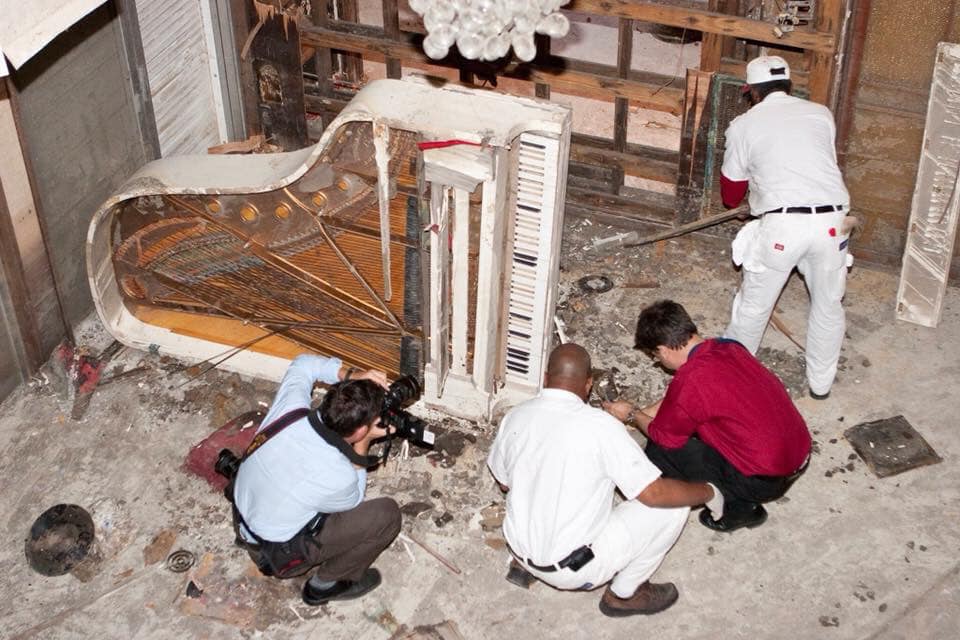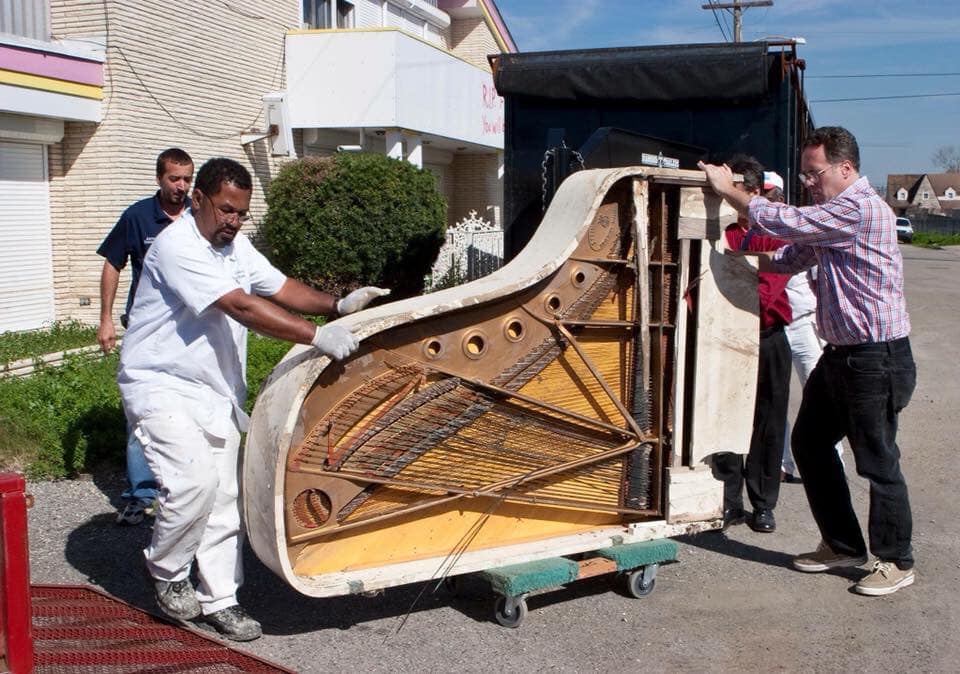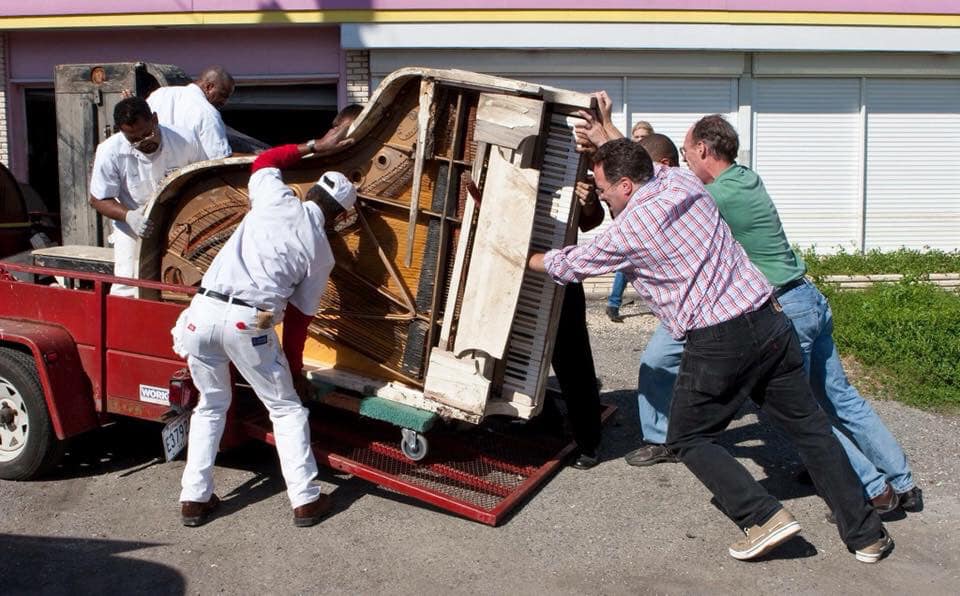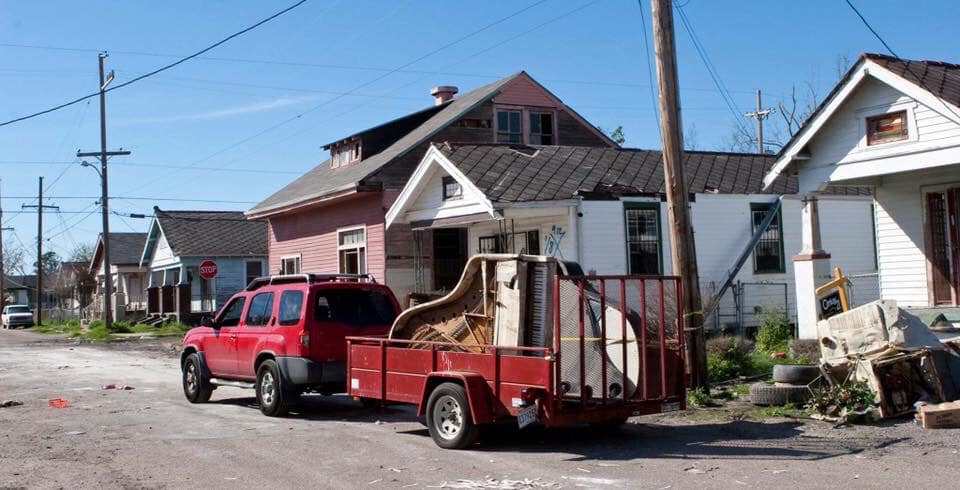Fats Domino and Hurricane Katrina
By: Mindy Jarrett | August 29, 2019
On the second floor of the New Orleans Jazz Museum, Fats Domino’s white Steinway piano sits gleaming on its pedestal. The baby grand, a loan from the Domino family, looks immaculate from where it is displayed today, but did you know that the grand piano once spent weeks immersed under ten feet of water?
Hurricane Katrina hit New Orleans fourteen years ago, today, causing levee breaches throughout the city. The Lower Ninth Ward, where Domino lived, quickly filled with floodwater, and the music legend had to be rescued by boat. The Steinway wasn’t so lucky.
Museum Director Greg Lambousy – then director of collections – had been to Domino’s house just weeks prior to Katrina’s landfall: “We had been working with Fats Domino and his family on an exhibit.” In fact, a picture taken at Domino’s house shows Lambousy holding some of Domino’s attire, and the white Steinway is visible in the background.
Lambousy and a team from the Louisiana State Museum would visit the Domino house again, six months later, though this time it was almost unrecognizable. Mud and mold covered the house, and a water line, ten feet up, bordered the walls. The white Steinway had been flipped; it was missing legs and keys.
The piano was stored for six years while Lambousy sought funding for its revitalization. The $30,000 restoration project received funds from Paul McCartney, though most came through a generous, $18,000 donation from Allan Slaight, a former music producer.





